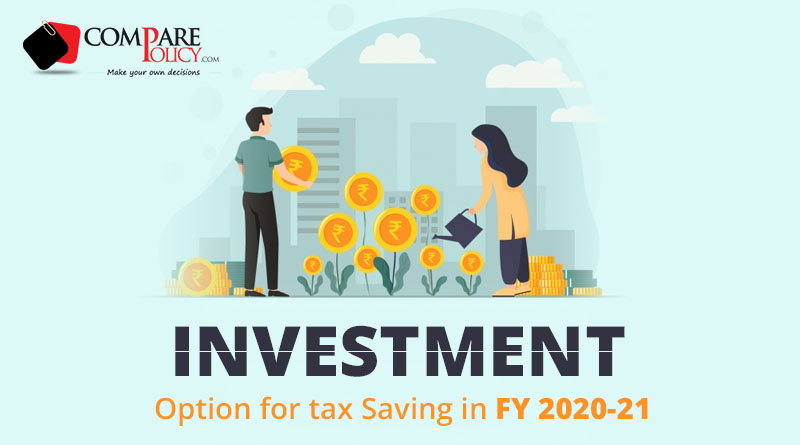Investment Options for Tax Saving in FY 2020-21
With tax regulations in place, it’s important to stay in compliance with them and fulfill all your taxation obligations. In Budget 2020, though the Finance Bill retains some of the tax exemptions on certain tax payments, almost 70 plus categories have been excluded from the list of exemptions.
We have to complete the tax savings process before the month of March when the financial year ends. It’s important to start the investment planning process early on so that we are able to take the full benefits that we are eligible for and not make expensive mistakes. We may not study all aspects of an investment opportunity, and we could end up losing money or remaining outside the purview of tax compliance.
There are several legal routes that you can adopt for tax saving. The main issue is that the regulations and rules are dynamic and can change from year to year. If you are not an experienced financial professional, it’s wise to consult a financial expert who specializes in tax planning. These professionals stay updated on the latest amendments, changes, and exemptions. With their help, it’s possible to maximize the benefits and take cognizance of all the current deductions and exemptions.
Table Content
What is Tax Saving?
- Tax saving is the decrease in tax payable to the tax authority which can be attributed to a tax benefit, savings, deduction or credit
- It can be a reduction in taxes as a result of paying taxes or expenses.
- It can also be defined as a net reduction in liability with respect to the current tax period.
- Tax planning is also a method of saving taxes – this is the reduction of tax burden on returns from investments
- There are certain specific funds, investment options and tax savings schemes that cater to the individual’s need to reduce their tax burden
Best Investment Options for Tax Saving in FY 2020-21
The following tables show some of the available investment instruments under different Sections of the Income Tax Act
Investment under Section 80C
| Investment under Section 80C | Advantages | Risks | Annual % ROI | Maximum Deduction Allowed |
|---|---|---|---|---|
| NPS (National Pension Scheme) | Ideal retirement nest-egg 40% of return is exempted from tax | Long lock-in period Corpus not tax-free on maturity | 10.5% | 1,50,000 deductions under Section 80CCD1, 80CCD2, 80CCD1-B may be applicable |
| ULIPS (Unit Linked Savings Scheme) | Savings Tax-free returns relatively short 5-year lock-in period | Directly affected by market volatility Lack of guaranteed returns Early withdrawal charges may impact ROI | 9.20% | 1,50,000 |
| VPF and PPF Voluntary Provident Fund and Public Provident Fund | Safety and Security Money flows in automatically into account | – | 8.5% | 1,50,000 |
Investment under Section 80D
| Investment under Section 80D | Advantages | Risks | Annual % ROI | Maximum Deduction Allowed |
|---|---|---|---|---|
| Based on health insurance premiums paid | Premiums are eligible for tax benefits | High cost of premiums | – | Deductions up to Rs 25,000 per budgetary year for medical insurance premiums Limit for Senior and Super Senior citizens increased to Rs 50,000 so maximum benefit 1,00,000 |
Investment under Section 10(15)i
| Investment under Section 10(15)i | Advantages | Risks | Annual % ROI | Maximum Deduction Allowed |
|---|---|---|---|---|
| Post Office Savings Accounts (several types available) | Tax free up to a certain limit Easily available throughout the country Guardians can open for minors Joint accounts possible | Reliable and risk free | Usually on par with bank ROI (currently around 7.2% pa) | – |
Some of the other tax savings avenues include Interest on Education Loan (under Section 80E), donations to specified charities and relief funds (Section 80G), donations to scientific research or rural development where the whole amount given is taken as a deduction (Section 80GGA), donation to a political party or electoral trust where full tax deduction can be claimed (Section 80GGC) etc.
How can I save tax via (bilateral) Mutual funds?
Equity-linked thrifts schemes or ELSS offer tax reduction under section 80C of the Income Tax Act, for investments up to Rs 1.5 lakh in a monetary year. You can choose investment options to invest through the SIP route or put in a lump sum expense.
How can I avoid spending excess TDS?
You require to submit your tax-saving proofs on time to your employer. The last date for such submissions varies, but most organizations would expect you to relinquish them by March 10, 2020. Nonetheless, employers start asking for them in January itself.

